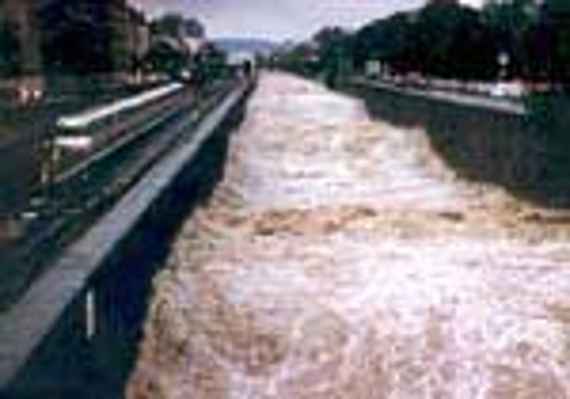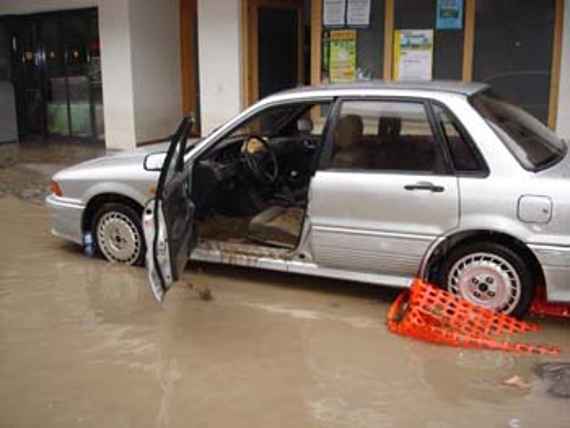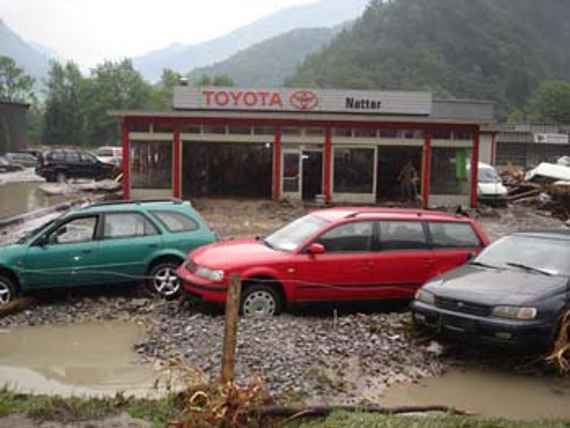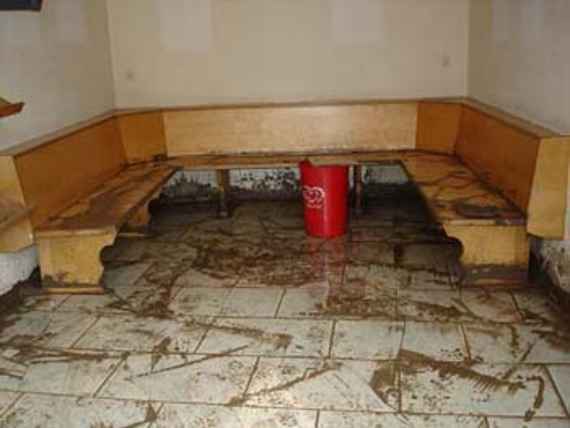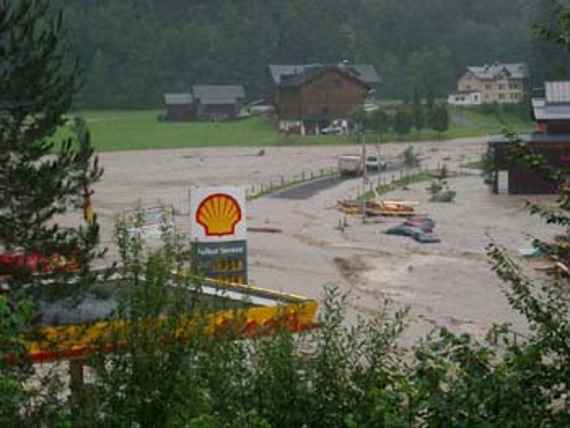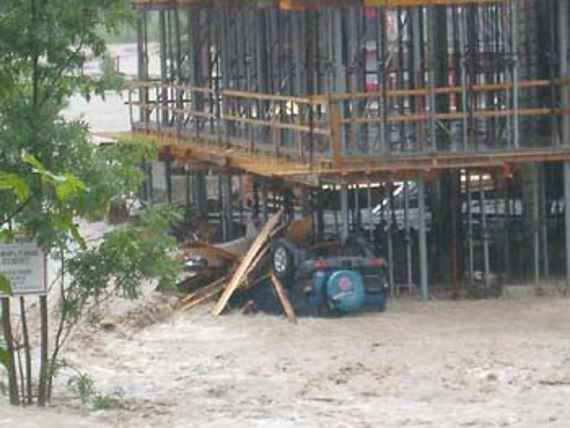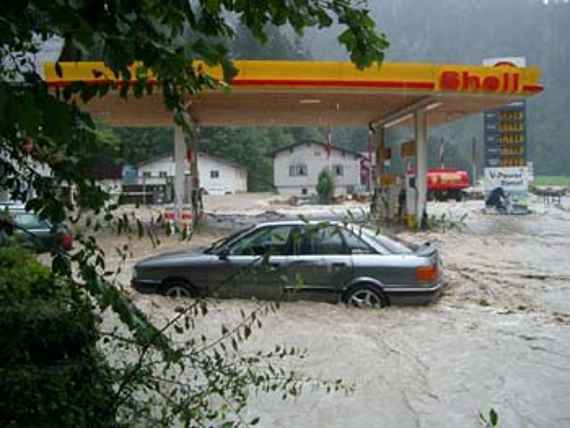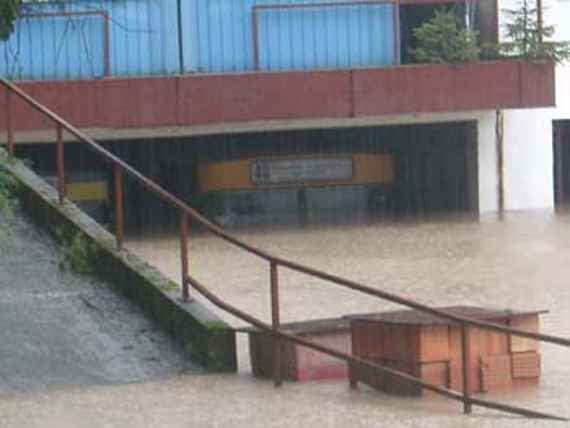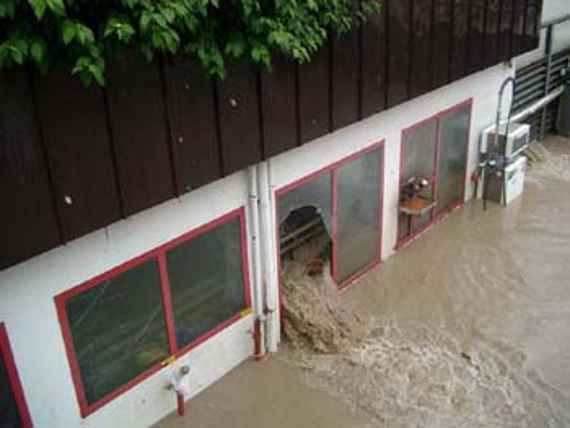This project was the continuation of the FloodRisk project, which was completed in 2004 and dealt with the analyses and necessary consequences of the flood events of 2002.
The final report "Analysis of the Flood Events of August 2002 - FloodRisk: Summary/Recommendations" contains recommendations which are necessary for a comprehensive flood management. In order to keep the process started with FloodRisk in motion, the following demand was included in the final report on the initiative of the Institute of Hydraulic Engineering and Calibration of Hydrometrical Current-Meters (IWB):
"In order to optimally guarantee the implementation of the implementation strategies and measures proposed in FloodRisk, an evaluation process should also take place, which on the one hand documents the progress at regular intervals, and on the other hand checks the quality of the measures taken in comparison to the formulated strategies".
The project Floodrisk II took up the recommendations from the old project and additionally dealt with the flood events of 2005 in Austria. The overall coordination of FloodRisk II was carried out by the Federal Environment Agency and the University of Natural Resources and Applied Life Sciences. Financing was mainly provided by the Federal Ministry of Agriculture, Forestry, Environment and Water Management (Funds for orders to processors outside the department) and the Federal Ministry of Transport, Innovation and Technology.
The IWB led the work package geomorphology in the overall project with a total of 4 subprojects:
- Representation of the effects of changes in the sediment budget and the river morphology on flood runoff and the damage pattern (including the importance of vegetation for the interaction between flood and morphodynamics)
- Analysis of the sediment budget and river morphology of selected Austrian watercourses (sediment deficit, surplus, development / actual state of river morphology, trends) in connection with floods
- Effects of sustainable bed load management on flood discharge using the example of the overall river engineering project for the Danube east of Vienna
- Preventive strategies for driftwood risk in torrents
The first two sub-projects were carried out at the Institute of Water Management, Hydrology and Hydraulic Engineering at the University of Natural Resources and Applied Life Sciences. The third sub-project was carried out by the civil engineering company DonauConsult. The fourth sub-project was carried out jointly by several institutes of the University of Natural Resources and Applied Life Sciences under the leadership of the Institute of Alpine Natural Hazards.
The geomorphological findings from the first project FloodRisk were essential for the project implementation:
-
- Preparation of area-wide sediment management concepts for the torrent and river catchment areas (including the Danube with a holistic overview of the river bed morphological processes) with elaboration of measures (e.g. against soil erosion, river bed deepening, sedimentation in reservoirs and flooded areas) taking into account the improvement of the ecological status.
- Identification of negative trends in the sediment budget (erosion/ transfer/ deposition/ remobilization) with a widening discrepancy between surplus (e.g. earlier inundation in the case of sedimentation) and deficit (e.g. increased shifting in the case of deepening and bank erosion) and derivation of adequate improvement measures.
In addition to managing and participating in the Geomorphology work package, the IWB was concerned with the links between the individual work packages and the synthesis to be derived from them.
The results of the project were presented to the public at a conference in Vienna from 29-30 June 2009.
The following summary of the results is taken from the publication "FloodRisk II Deepening and networking of forward-looking implementation strategies for integrated flood management - synthesis report":
After the extreme flood of 2002, another major flood followed in 2005, this time mainly in the alpine region of western Austria, and one on the river March in 2006. While many recommendations from the FloodRisk I project have already been implemented, gaps in the analysis remained and further problem areas arose, the discussion of which led to the implementation of the FloodRisk II project.
The project "FloodRisk II deepening and networking of future-oriented implementation strategies for integrated flood management" consists of 45 subprojects, which were summarized in 8 work packages. The project FloodRisk II provides essential recommendations in all areas of integrated flood management. The analysis of possible effects of climate change on flood management showed that reducing the uncertainty of the data is more important for determining the design values. As a new instrument of cooperation between flood protection and disaster management, the lamella forecast is proposed. For small and medium floods, the positive effect of a structured forest and the need to minimize sealing of soils was demonstrated. The minimum river morphological space requirement with 1 to 3 times the river width on the left and right banks could be defined as a safety distance to be kept free. The consideration of the long-term morphological development and especially the sediment continuum is essential for the development of the rivers, whereby on most of the Austrian rivers a bed load deficit with river bed deepening and associated flood risk prevails. Spatially differentiated vegetation management allows a section-related consideration of the need for protection (maintenance measures) in settlement areas and dynamic development. From an ecological point of view, the river-meadow system is to be considered jointly and the use of the floodplains and adjacent foreland is important.
In the thematic field of integrated flood management, recommendations were derived regarding the maintenance and improvement of floodplains (exempli gratia flood evaluation matrix assessment), status monitoring, the repair of dams and torrent control measures, the use of property protection and mobile flood protection, but also emergency measures. The economic importance of flood protection and the change from new construction to the maintenance of protective measures is evident in the area of the Federal Water Engineering Administration as well as in torrent and avalanche control.
Spatial planning is a decisive partner of integrated flood management and FloodRisk II provides important opportunities for improvement in the area of new planning instruments, inter-municipal cooperation, resettlement and supra-local spatial planning up to regional planning laws.
In addition to ecology themes, FloodRisk II contains a detailed legal section for the first time. The implementation of the EU Flood Directive in the Austrian Water Law Act is of major importance. FloodRisk II also makes concrete proposals for improving the existing situation with regard to summation effects. Questions of how to deal with existing endangered dedications are dealt with as well as those of building law in connection with floods. A further focal point is the issue of liability, which is viewed from different perspectives.
Finally, FloodRisk II contains an implementation strategy including a presentation of the measures taken so far as a consequence of FloodRisk I and the need for improvement as well as extended and new recommendations.
Bregenzerache, flood August 2005, mud in the car
Bregenzerache, flood August 2005, bed load deposition on parking lot
Bregenzerache, flood August 2005, remaining sludge in building
Bregenzerache, flood August 2005, flooded road
Bregenzerache, flood August 2005, construction site and a car washed away by the flood
Bregenzerache, flood August 2005, flooded gas station
Bregenzerache, flood August 2005, building with water flowing through
Bregenzerache, flood August 2005, bus garage in the flood

